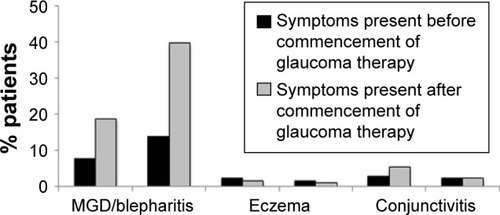Figures & data
Figure 1 Tear film disruption caused by instillation of a single drop of BAK (0.01%).
Abbreviation: BAK, benzalkonium chloride.
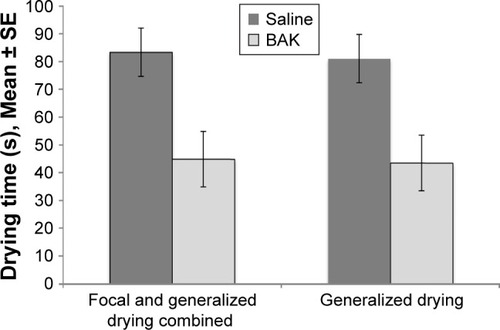
Figure 2 Ocular symptoms and signs with preservative-added and preservative-free glaucoma medications.

Figure 3 Hyperemia in patients receiving preservative-added or preservative-free glaucoma medication.
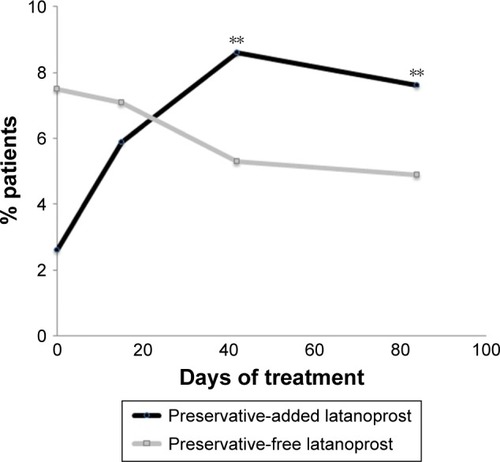
Figure 4 Ocular signs and symptoms in patients receiving preservative-added or preservative-free glaucoma medication.
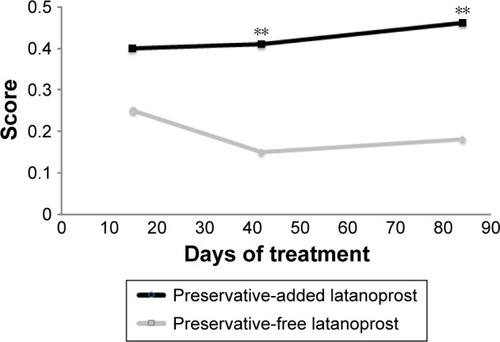
Figure 5 Reduction in ocular symptoms following switch from preservative-added eye drops to preservative-free eye drops.
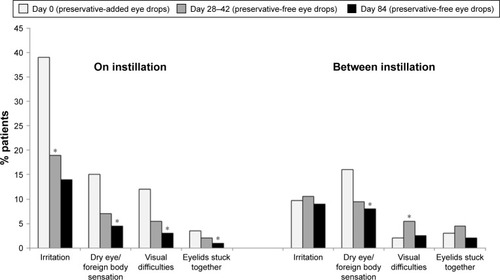
Figure 6 Reduction in clinical signs following switch from preservative-added to preservative-free eye drops.
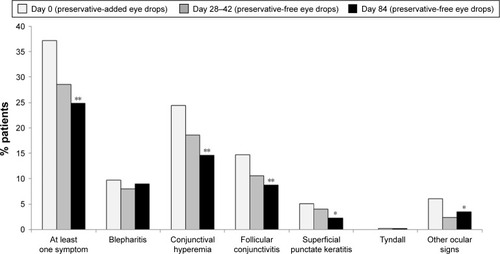
Figure 7 Proportion of patients experiencing symptoms between eye drop instillations.
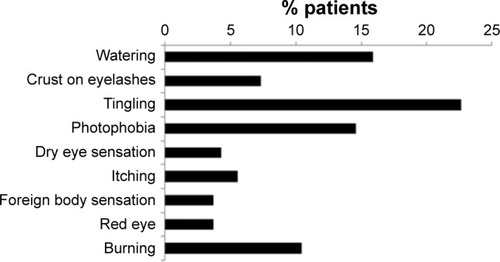
Figure 8 Emergence of ocular symptoms on commencement of glaucoma treatment.
Abbreviation: MGD, meibomian gland dysfunction.
